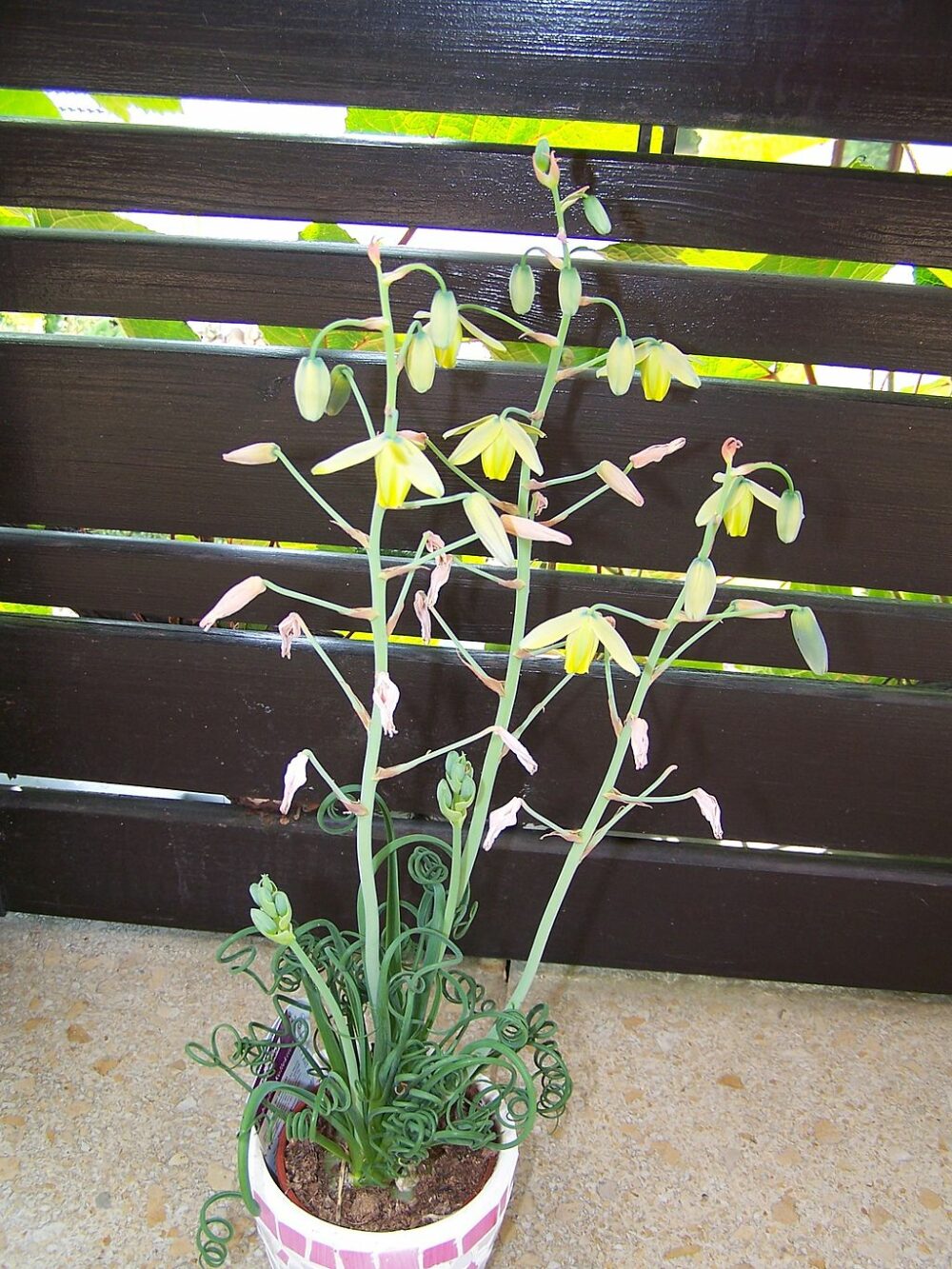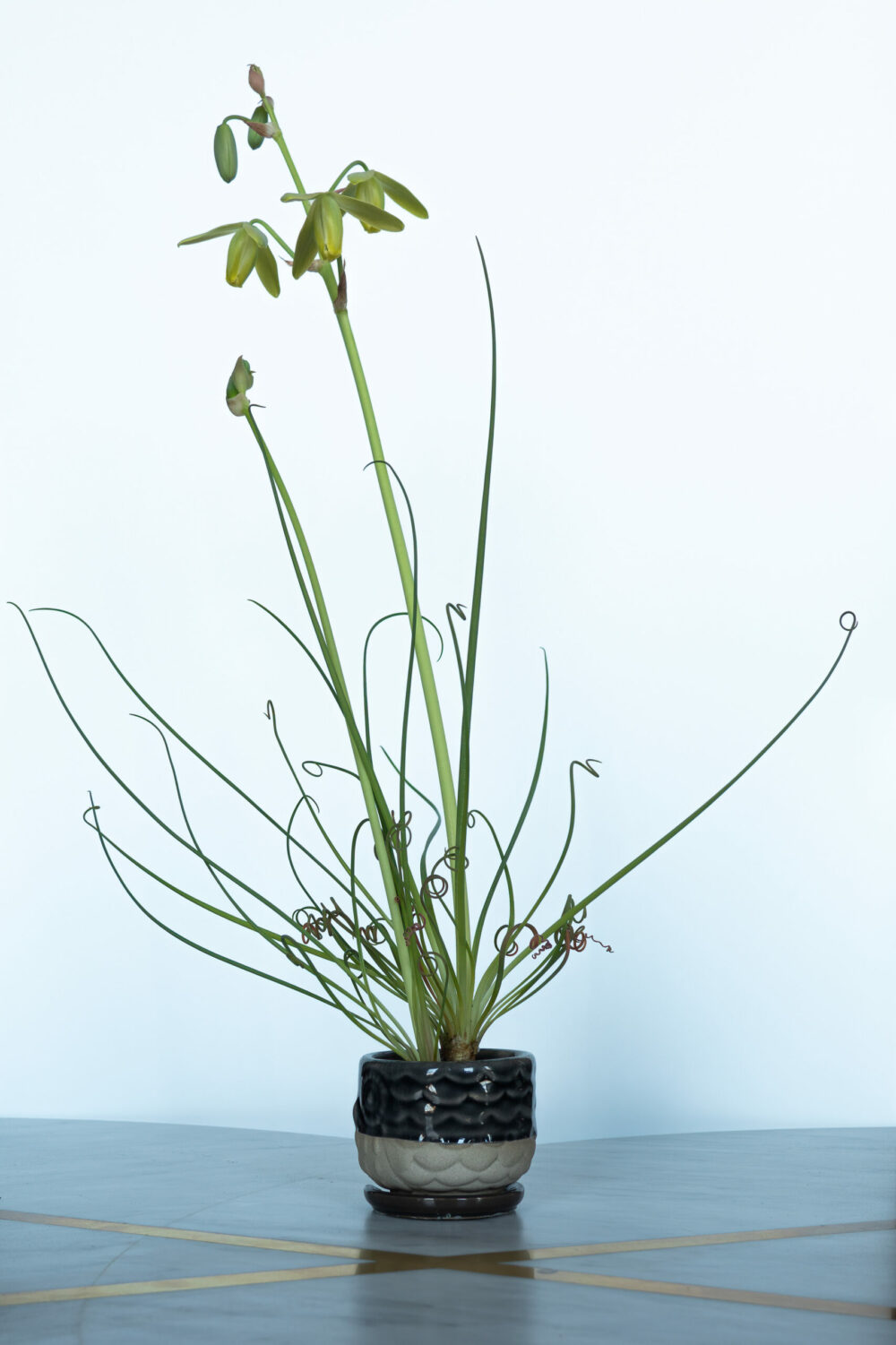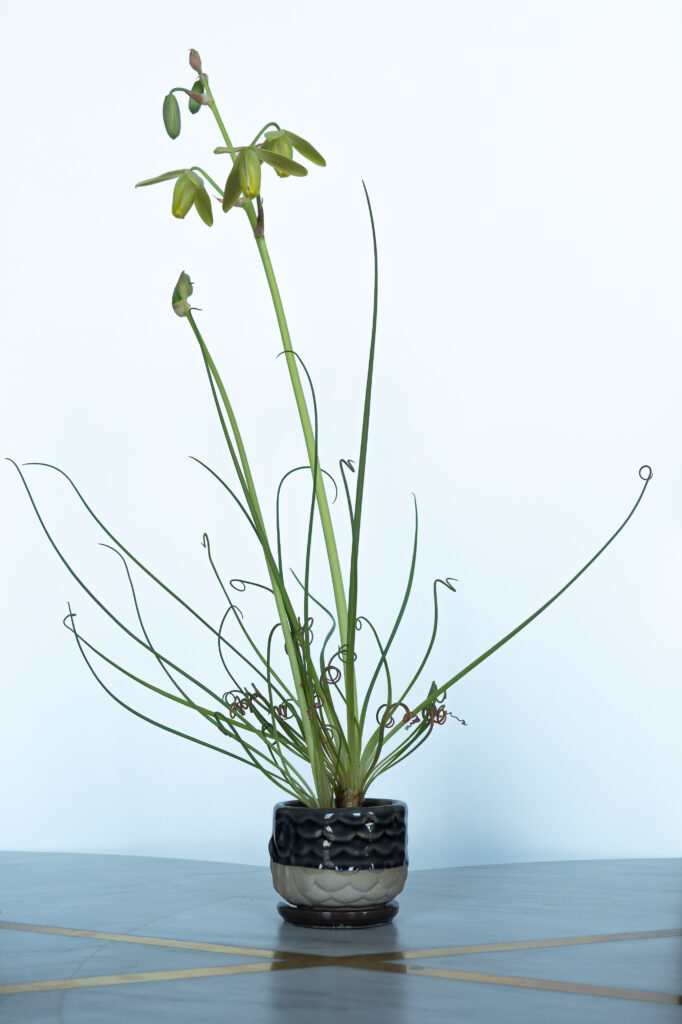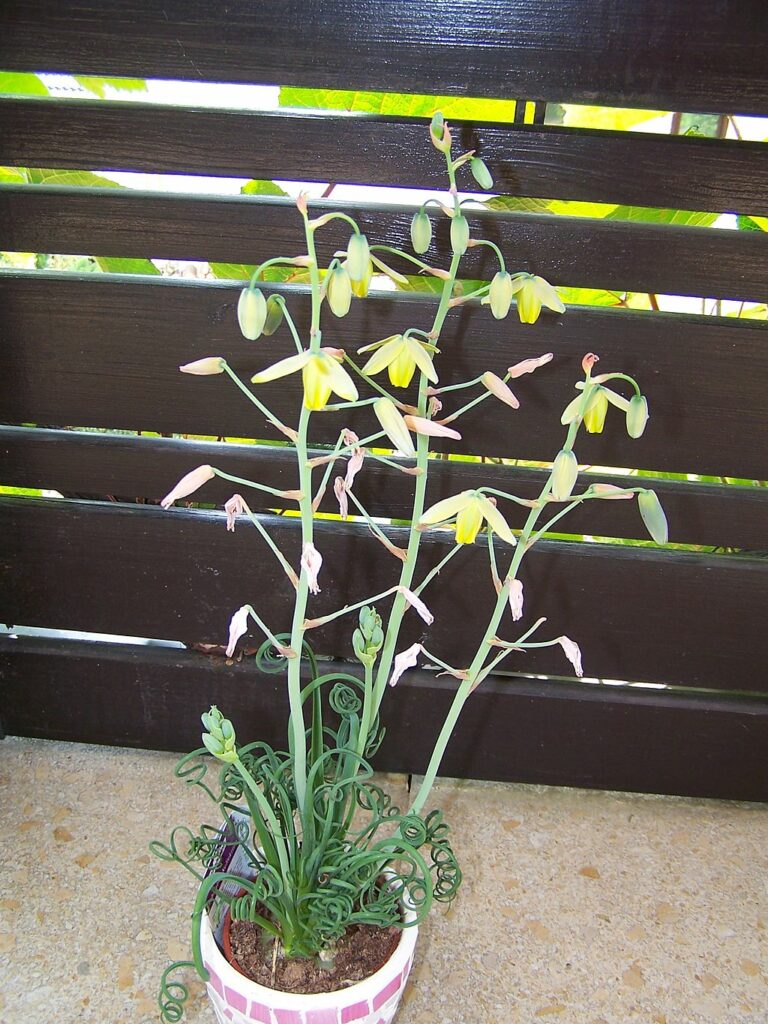Spiral Albuca Care – How To Grow And Care For Spiral Grass Plants
The spiral albuca is the kind of plant that gives a good twist to your home landscaping plot. But movie puns aside, if you like quirky-looking houseplants, then this is the one for you. In addition, people who grow bonsai would appreciate the ornamental values of the spiral albuca. Its slender and spiral leaves complement the compact bonsai and create an exotic ambiance around the aging tree.
Whatever your reasons to have a plant that looks like fizzled hair, the spiral albuca seems a good fit in many landscapes. The vibrant green hues and twisted leaves have a place in many decors. The more outlandish your taste, the better.
If you’re wondering about this unique plant and how to grow it in your house, read on to find out more.
Spiral Albuca at a Glance
Spiral albuca (Albuca spiralis) has many other names, and they all reflect the striking appearance of this perennial. It goes by Spiral Grass, Curly Albuca, Slime Lily, Corkscrew Albuca, Helicopter Plant, and even Sticky Corkscrew Lily, among others. But whatever you call it, the spiral albuca is quite popular in its native habitat in South Africa. In the USA, it grows best in zones 8 to 11.
Small and compact, the spiral albuca grows to reach about one foot at full maturity. The leaves grow out of a yellowish bulb that stays for the most part under the surface of the soil. The bulb is usually about 3 inches in diameter and has an irregular and bumpy surface.
But it’s the leaves that give the plant its unique shape along with the many descriptive names. Each leaf starts smooth and straight from the top of the bulb. But as it grows, the flat tip starts to curl around itself in the shape of a screw. ;
Quaint flowers bloom among the leaves. They might not be as dramatic as the spring-like leaves, but they still get your attention with their yellow petals. At full bloom, the flowers emit a delicate fragrance that lasts until the flowers pollinate and fade. You’ll need to keep the plant in the sun during the flowering cycle since the flowers open up under the sun and close in the evening. Everything about this plant is just quirky and melodramatic. Perhaps that explains its growing popularity among suave gardeners.
Albuca Varieties
The albuca genus is a large family full of many bizarre plants. So if you would like to create an exotic corner in your house for peculiar-looking plants, the albuca family will have a lot to contribute to your collection. Here are some varieties to consider.
- Frizzle Sizzle: A winter plant that grows and flowers during the cool months and goes dormant in the summer. The corkscrew leaves reach about 3 inches long, and the flowers grow on a spike in the middle of the plant. The flowers are yellow and have a faint fragrance. After the flowers fade, the plant goes dormant until the winter.
- Albuca circinata: A deciduous variety with curly leaves. It also has a pale yellow flower growing on top of a tall stalk. Most leaves are hairy and rough, but that gives them a distinct ornamental quality. In the right conditions, the plant will keep its leaves all year round.
- Pregnant Onion: A curious-looking succulent shaped like a bulb with little bulbs growing out of it. The leaves are bright green and reach about 2 feet long. So it requires more space than the other albuca varieties.;
How to Grow Spiral Albuca
As we have seen so far, the spiral albuca is full of surprises. At each turn, it will throw a quirky feature that will make you stop and wonder. But the surprises don’t stop there. When you plan to grow this perennial, you’ll be amazed at the number of ways you can propagate it. You could try starting it from seeds, a cutting, or plant separation. Each method has its advantages, and we cover them all here.
Seeds
This method is not the fastest way to grow spiral albuca at home. It’s also the most work-intensive and time-consuming. You start by collecting the mature seeds from a healthy plant by the end of summer. Wash the seeds thoroughly to remove any impurities or fungal spores attached to them. When you’re ready to plant the seeds in the fall, soak the seeds in warm water overnight. Dry the seeds and sow them in sandy soil or a general-purpose potting mix. Water the soil and keep it moist until the seeds germinate. It will take about 4 weeks to see the first seed sprouting.
Plant Separation
A fast and effective way to plant spiral albuca. Of course, you’ll need to have access to a mature plant to make the plant splitting. The best time to use this method is either in the spring or fall while repotting the plant. After you remove the large bulb, look for small bulbs attached to it with dense growths. Cut each small bulb with a sharp blade at the base where it connects to the mother bulb. Wash the bulbs and dry them off. Plant them in pots filled with loose and rich soil. Water the bulbs and keep the soil moist; it will take between two to three weeks for small roots to grow out of the bulb.
Cutting
Select a robust and healthy stem in a mature spiral albuca plant. During the peak season in the winter, cut that stem at the base at an angle with a sharp and sterilized blade. Keep the stem in a warm place until the cutting heals and develops a crust. Dip the cutting in a rooting hormone powder, shake off the excess powder then plant it in a rich and loamy soil. Water the cutting to get the soil moist. Roots will develop after about three weeks.
Spiral Albuca Care
The spiral albuca is one of the most rewarding evergreen perennials you can grow as a houseplant. It requires little care, and you have more control over the temperature and light. Even the deciduous varieties do well as houseplants, and with adequate water, they will keep their lush green leaves all year round. ;
Soil
Unlike many other succulents, the spiral albuca not only has roots buried in the soil but a healthy bulb as well. That means you’ll have to choose the right type of soil carefully. Otherwise, the bulb will not grow well, and you won’t have many leaves coming out of it. For best results, you should make sure the soil is loose and sandy. In fact, it should have more sand than clay. Loamy soil will do just as good. As long as you don’t try to grow it in clay or dense soil, this succulent will thrive as a houseplant.
Water
If you have sandy and well-drained soil, that will make watering the plant a lot easier. Make sure to use a pot with plenty of drainage holes since the bulb and the roots don’t like wet soil. And because of its unusual growth cycles, you will need to water the plant less in the summer and more in the winter. That’s because the plant goes dormant in the summer (which is the wintertime in its original habitat in the Southern Hemisphere). Allow the soil to go dry between irrigations and keep it slightly damp. In the winter, as the plant starts to grow and flower, it will need regular watering. Overall, you should keep the soil moist at best and never get it wet.
Light
Even though you grow the spiral albuca as a houseplant, it still needs its fair share of sunlight. It can tolerate full sun, although dappled light and partial shade are ideal for this perennial succulent. Place the pot on a window sill facing south or west, where it will get between five to seven hours of sunlight every day. When the plant goes dormant in the summer, it will not require as many hours of sunlight. This plant has a low tolerance for frost and cold temperatures. Ensure that the temperature in the room is in the mid-seventies Fahrenheit. Under no circumstances should you let the room temperature go under 60 degrees F.
Fertilizer
Since it favors rich soil, the compact spiral albuca is a heavy feeder. You’ll need to mix plenty of organic material in the soil before you plant this succulent. Once it’s growing successfully in the pot and the leaves take the shape of a corkscrew, you’ll need to fertilize it twice a year. Both applications happen in the late fall and mid-winter. Use a general-purpose fertilizer and make sure the plant is well hydrated before you apply the fertilizer. This protects against root and bulb burn. The second application is around the time the plant starts flowering. You can use mushroom compost or rabbit manure tea as mild alternatives to chemical fertilizers.
Pests and Diseases
As is the case with many succulents native to South Africa, the spiral albuca doesn’t attract pests in the Northern Hemisphere. That makes it an exception among houseplants that act as magnets for aphids, scale, and spider mites, among others. But not this hardy succulent. It’s practically pest-free all year round.
The same applies to diseases. In its natural habitat, this succulent grows disease-free. The only problem you might have is bulb rot. If you overwater the plant or keep it sitting in stagnant water, the bulb starts to rot. The symptoms include yellowing leaves and a soft bulb. If the problem persists, the roots too will rot, and that could bring the plant’s life to a sudden end. ;
To fix the bulb rot problem, remove the plant from the pot and inspect the bulb and roots. If the roots are not damaged, and the bulb maintains its yellow color, then you can replant it in a new pot and fresh soil. Otherwise, you would have to restart a new plant.



